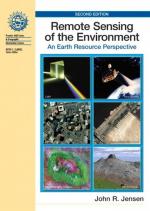|
This section contains 1,155 words (approx. 4 pages at 300 words per page) |

|
Remote sensing is the science and art of obtaining and interpreting information about an object, area, or phenomenon through the analysis of data acquired by a sensor that is not in contact with the object, area, or phenomenon being observed. There are four major characteristics of a remote sensing system, namely, an electromagnetic energy source, transmission path, target, and sensor.
The Sun is a common source of electromagnetic energy. It radiates solar energy in all directions. Earth reflects the energy from the Sun and emits some energy in the form of heat.
Based on the energy source, remote sensing systems can be grouped into two types, passive and active systems. Passive remote sensing systems detect radiation that is reflected and/or emitted from the surface features of Earth. Examples are the Landsat and European SPOT satellite systems. Active remote sensing systems provide their own energy source...
|
This section contains 1,155 words (approx. 4 pages at 300 words per page) |

|


